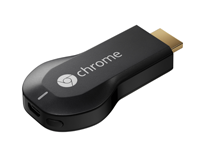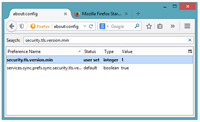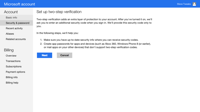This excerpt is from my book, Hacking Windows XP, shows you how to tweak the Windows XP System Registry settings to improve network and Internet speed.
The speed of your network connection doesn't just depend on the speed of your hardware. Windows is an operating system that is designed to work on a variety of different hardware and network setups. Because of the abstract nature of the operating system, it cannot be optimized for user-specific hardware setups.
Depending on the type of network connection you have, you might be able to tweak your connection so that the speed of your Internet, as well as your local area network, will be faster. By hacking the System Registry and editing the TCP/IP parameters, you can fine-tune the values to take advantage of more reliable, faster Internet connections, such as DSL and cable. These next sections will guide you through the steps of increasing both the speed of your local area network and your Internet connection.
Does your computer slow down when you browse your local area network and connect to other computers that are sharing data? One of the most common causes of this slowdown is a feature of Windows Explorer that looks for scheduled tasks on remote computers. This effort can take some time on some computers and can really slow down your browsing. The window with which you are browsing the network may appear to freeze momentarily, as the system is waiting for a response from the remote computer.
Although this problem is a complex one, the solution is very simple. Instead of having to wait for the remote scheduled tasks, which is useless information to anyone who is not a system administrator remotely configuring scheduled tasks, you can disable this feature. In order to do this, you will have to hack the System Registry and delete a reference to a key so that this feature will not be loaded. To do this, follow these steps:
- Open up the Registry Editor by clicking the Start Menu and selecting Run. Then type regedit in the text box and click the OK button.
- Once the Registry Editor has loaded, expand the HKEY_LOCAL_MACHINE key.
- Next, expand Software and then Microsoft.
- Locate Windows and expand that as well.
- You will want to be editing the main system files, so expand CurrentVersion.
- Because this feature is a feature of the Windows component known as Explorer, expand the Explorer key.
- Next, you will want to modify the remote computer settings, so expand the RemoteComputer key and then expand the NameSpace key to show all of the features that are enabled when you browse to a remote computer.
- In the NameSpace folder you will find two entries. One is "{2227A280-3AEA-1069-A2DE-08002B30309D}" which tells Explorer to show printers shared on the remote machine. The other, "{D6277990-4C6A-11CF-8D87-00AA0060F5BF}," tells Explorer to show remote scheduled tasks. This is the one that you should delete. This can be done by right-clicking the name of the key and selecting Delete.
Tip:
If you have no use for viewing remote shared printers and are really only interested in shared files, consider deleting the printers key, "{2227A280-3AEA-1069-A2DE-08002B30309D}", as well. This will also boost your browsing speed.
Once you have deleted the key, you just need to restart and the changes will be in effect. Now your network computer browsing will be without needless delays
Disabling unneeded protocols
With every computer comes programs installed that you do not need. As with extra programs taking up space, extra protocols are just wasting your network connection and can actually slow it down. How is this possible? By default, a few different protocols are installed on your computer to allow for maximum compatibility with other computers on a network; these protocols each require bandwidth to operate. Most users will not use too many protocols, and their computers will use up a portion of their connection as they respond and transmit information for these protocols.
Additionally, with extra protocols installed on your network adapter connected to the Internet, you increase your risk of security-related problems. One of the most common risks for broadband users is that they have the Client for Microsoft Networks networking protocol enabled on their connection. This protocol allows everyone in their neighborhood to connect to the users' computers and view any files that they may be sharing. This fact alone should be a good enough reason for you to turn off the extra protocols. But with them disabled, you will also save a little bandwidth as well.
Viewing protocols on your network adapters
Viewing the protocols installed and active on your various network adapters is easy. Just follow these quick steps and you will be viewing them in no time:
- Right-click the My Network Places icon on the desktop or in the Start Menu and select Properties. If the My Network Places icon is not in either of those locations, then go to the Control Panel and click the Network Connections icon that is shown under the Classic view.
- Next, right-click the network adapter with which you want to view the network protocols and select Properties.
- This will bring up a list of the protocols installed as well as active on your adapter, as Figure 11-11 shows. The protocols that are installed but not active are indicated by the absence of a check in the checkbox.
Disabling a specific protocol
Now that you have the list of installed and active protocols on your screen, you are ready to disable a protocol. To do so, just click the check box to remove the check. Then click the OK button and the protocol is no longer active on the network adapter.
I highly recommend that you disable all protocols except for the TCP/IP protocol (also referred to as the Internet Protocol). Doing so will optimize your adapter for speed and security.
| | | | | | | [Network adapter protocol list](javascript:OpenImageWindow('http://www.extremetech.com/image_popup/0,1694,s=25534&iid=91275,00.asp', '640', '588')) | | click on image for full view |
Be aware that if you remove the Client for Microsoft Networks protocol and the file-sharing protocol, you will no longer be able to share your files. Additionally, you will no longer be able to connect to remote computers to view their shared files. Also keep in mind that if you have multiple adapters in your machines, such as a wireless adapter, a wired network adapter, and a dialup modem, you will have to repeat the preceding instructions for each adapter.
Tweaking your Internet connection for speed
Almost every computer user has different Internet connection conditions. Some users have very high-speed connections, while others have slow connections. Some users have high-speed connections using cable-based technologies, while others have high-speed connection through DSL-based technologies. On top of these differences, some are located farther away from their local network switching station than others and have a higher latency (delay) on their connections because of the distance the data has to travel. All of these different connection conditions make every user unique. The TCP/IP protocol settings can be optimized for best speed under each of these situations. By default, Windows XP has these settings set in a "one size fits all" approach. As I mentioned earlier, Windows has to be abstract in certain areas because of its broad user base. Because of this approach, many users can fine-tune their settings to be optimal for their connection conditions. Doing so will optimize the data transferred so your network connection will be more efficient, leading to high speeds. With a little help from some fine online tools and software programs, you can test your Internet connection and decide what needs fine-tuning. The process of tweaking your Internet connection is not always easy, but it is doable.
Caution: Before going any further, you are strongly advised to create a system restore point, so that if things go wrong, which is not very likely, you will have a backup. The next step in the tweaking process is to get all of the software that is needed. The main software program that you will use is called CableNut, which is developed by CableNut Software and is available for free at www.cablenut.com. CableNut is a great program that allows users to edit their Internet settings easily. Visit their Web page and download and install the latest copy.
Calculating settings for CableNut
Once you have downloaded CableNut, you are ready to start getting information to use with the program. The first value that you will need to calculate is the latency of your connection when it is active. To do this, you will use the trace route command built into Windows XP. Follow these steps to get the latency value to use for your connection:
- First, open up a Command Prompt window. This can be done by clicking the Start Menu and selecting Run. Then type cmd in the text box and click the OK button.
- Once Command Prompt is loaded, you are ready for the next part. Because you will need to test your connection when it is active, you will need to find something large to download that will run the duration of the test, which will be approximately 30 seconds. I recommend that you head over to www.microsoft.com/downloads and find some huge file, such as the .NET SDK framework, which is over 100,000 KBs. For the test, you want a file big enough so it will be downloading throughout the whole test. Those of you on a dialup connection can pick a much smaller file than those on a high-speed connection.
- Once you have your download test file picked out, start the download and switch back to the Command Prompt window. In that window, type tracert www.tweakxp.com. During the test, you will see many times displayed in milliseconds. After the test finishes, pick the highest time, as shown in Figure 11-12. This is the number that you will use as your latency. Also, feel free to cancel the download after the test is finished.
Entering the latency value into CableNut
Now that you have the latency value calculated, you are ready to enter this information into a great online CableNut settings calculator written by Joe Zeiler, who is one of the talented moderators at the TweakXP.com support forums. Open up your Web browser and visit www.j79zlr.com/cablenutXP2k.php (the URL is case-sensitive!), then follow these steps to get the values to enter into CableNut:
- Once you have opened up the site, the first part of using the settings calculator is to select your connection type from the drop-down box.
- Next, you will have to do a little research and find out exactly what your upload and download speeds should be for your Internet connection. I had to contact Comcast, my ISP, to find out the exact values, because the values are not always advertised. Once, you get those values, make sure that they are in kilobits per second and not kilobytes per second (KB= kilobytes; Kb= kilobits), then enter them in the corresponding text boxes on the Web page.
| [Windows Trace route program displaying latency values](javascript:OpenImageWindow('http://www.extremetech.com/image_popup/0,1694,s=25534&iid=91276,00.asp', '640', '524')) |
| click on image for full view |
- Enter the latency value that you calculated earlier into the latency text box on the Web page and then click the Calculate button.
- After you hit the Compute Settings button, scroll down and you will see the values that were calculated. Now, you are almost done. Continue scrolling down until you see a button labeled CCS File Generator under the Cablenut setting files section. Click that button and a new window will pop up with some text in it. Make sure that you have any pop-up blockers disabled when you are using the calculator.
- Use the mouse and select all of the text and numbers that are displayed in the pop-up window. Right-click the mouse and select copy to copy all of the text on the page to the clipboard.
- Now open up Notepad from the Accessories folder. In the blank Notepad window, paste the contents of the clipboard by right-clicking the white background and selecting Paste.
- Once Notepad is displaying the information that you copied from the pop-up window, all that is left is to save the file in the CableNut format. To do this, click the File menu bar item and select Save As. Then in the Save As Type drop-down box, select All Files. Key in myCableNutSettings.ccs in the file name text box. Specify the Save location, such as the desktop, and click the Save button.
You are now finished with the calculations that will optimize your Internet connection. That wasn't too hard now, was it?
Using CableNut to adjust settings
Now that you have created your CableNut settings file, or will be using the 56K settings file, you are ready to start using CableNut. Follow these steps to import the new optimized settings into your system:
- Start up the CableNut application by opening the Start Menu and browsing to the CableNut folder and selecting the adjuster application.
- When CableNut has loaded, click the File menu bar item and select Open Custom Settings File. Navigate to where you saved your settings file, or if you are a 56K user, use the file that is on the companion CD, called 56K_CableNut.ccs, and then click the Open button.
- Now you will see the information boxes for all of the different parameters filled with your connection-specific information, as shown in Figure 11-13. The last step is to click the Save to Registry button and you are finished. After you click the Save button, reboot, and your new settings will be in effect.
| [CableNut settings](javascript:OpenImageWindow('http://www.extremetech.com/image_popup/0,1694,s=25534&iid=91277,00.asp', '640', '600')) |
| click on image for full view |


